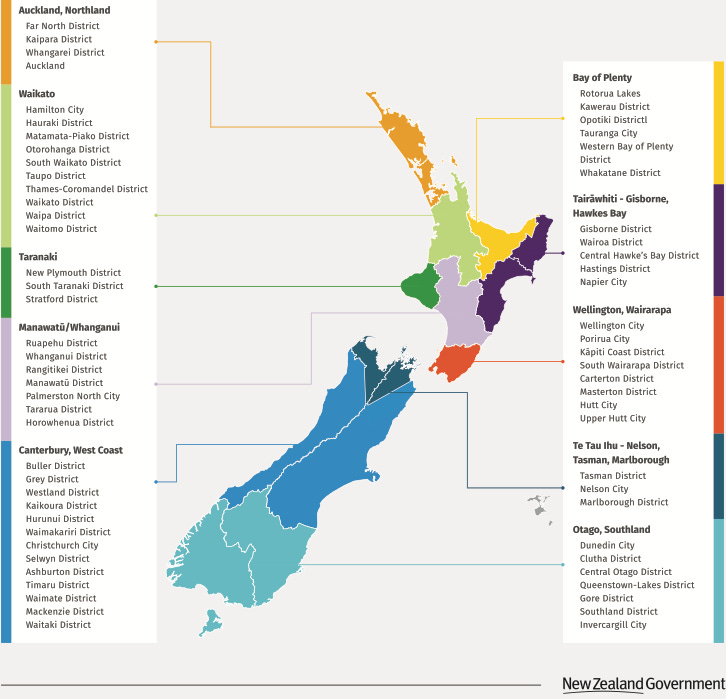Three Waters watered down to 10 Waters
Govt changes Three Waters to 10 entities from four, but co-governance & moving assets to new entities' balance sheets stays; Plan delayed 2 years & new funds for councils cut by $1.5b; Plus my views
TL;DR: Local Government Minister Kieran McAnulty and PM Chris Hipkins have announced changes to the Labour Government’s ‘Three Waters’ reforms that increase the number of new water entities to 10 from four, but will keep co-governance with iwi above the entities and still move council assets to the new entities to ensure ‘balance sheet separation.’
They also announced the changes would delay the creation of the 10 entities by as long as two years to July 1, 2026 and see a planned second round of compensation for councils cut by $1.5 billion.
Three Waters was always a fudge to avoid fiscal conflict with voters and extend the magical thinking. Having 10 entities instead of four is just as magical and pointless. (See more of my views on this below the paywall fold)
Here is the map below of the 10 entities provided in a briefing document by the minister, along with a Questions and Answers document:
Savings modeled and peer-reviewed
McAnulty said the new entities could save households between $2,770 and $5,400 per year on average by 2054, relative to the status quo, because the entities would be able to borrow more than the councils on their own, largely because the assets are separated from other council assets and allowed to impose water charges. It was not clear from the document whether the comparisons included water charges.
McAnulty said modelling done by the Water Industry Commission for Scotland (WICS) that estimated total upgrade costs of $185 billion over the next 30 years had been peer-reviewed by Australian consultancy Farrierswier Consulting and the local arm of Beca.
“Leaving councils to deal with this themselves will lead to unaffordable rate rises. It would be setting councils up to fail and I can’t in good conscience do that.
“Our reform proposals will respond to long-running problems that have resulted in rapidly rising rates, poor health and environmental outcomes for many communities, deteriorating infrastructure due to sustained underinvestment, and wide variation in service quality.
“The need for investment is only getting greater. The recent flooding and cyclone is a taste of the extreme weather events to come, and our water infrastructure needs to be ready.” Local Government Minister Kieran McAnulty in a statement.
He said the entities would be rolled out in a staggered approach, starting in early 2025 and ending by July 1, 2026. Having 10 rather than four entities would increase the costs of creating the entitites and may reduce the initial economies of scale savings, he admitted. The Government had also decided not to proceed with a planned second round of ‘better off’ payments to councils worth $1.5 billion. A first-round of payments totalling $500 million would go ahead, he said.
“Our plan depends on setting up new water services entities that are large enough to borrow much more money over longer periods for this investment than councils can. It also depends on these larger entities being run more efficiently, by buying equipment and services in larger quantities and at lower prices.
“We are also looking at ways to recoup some of the scale economies that might otherwise be lost due to there being smaller entities – through shared services, for example.
“Increasing the number of entities means the overall cost of setting them up will be higher. This is because more entities means the task of setting them up is more complex and will take more time to ensure a smooth transition.
“To meet the extra costs of establishing ten entities and make sure the new entities do not begin with high levels of debt, the Government has decided not to go ahead with the $1.5 billion second phase of ‘better off ’ funding for councils.” McAnulty.
McAnulty re-emphasised the importance of ‘balance sheet separation’, which remained in place and would mean the transfer of assets to the new entities with their own borrowing capacity and ability to levy water charges.
“Previous advice from ratings agency Standard & Poor’s when they considered a similar regional water services entity model was that balance sheet separation would be achieved under this approach provided no individual council had a very significant or controlling interest. We are confident this will remain the case.” McAnulty
He reiterated that none of the reforms’ ‘bottom lines’ had changed, listing them thus:
Water services entities will continue to be publicly-owned;
They will have operational and financial independence (balance sheet separation) to allow them to make much needed investment; and,
They will have oversight from a regional partnership between local authorities and mana whenua.
McAnulty said legislation to enact the reforms would be introduced and passed before this year’s general election.
Reaction from opponents
The Co-Chairs of the Communities 4 Local Democracy grouping of councils opposed to Three Waters, Helen Worboys and Dan Gordon, said the Government had not made meaningful changes and had, in effect, turned it into a political football ahead of the October 14 General Election.
“Simply adding more entities and changing the name is a desperate attempt to save this plan and attempt to show they’ve done something with the $100 million they’ve sunk into this process so far,” Co-Chairs of the Communities 4 Local Democracy grouping of councils opposed to Three Waters, Helen Worboys and Dan Gordon, in a statement.
The next bit is below the paywall fold for paying subscribers.
My view: Three-Four-10 waters is still a pointless fudge
Keep reading with a 7-day free trial
Subscribe to The Kākā by Bernard Hickey to keep reading this post and get 7 days of free access to the full post archives.




